| This is a great time to buy one of these underpriced awesome binocs. Vanguard is running a promotion to get a free shooting stick with any purchase before November 30th. They are available at several internet retails well under $400. Rubber armor with thumb indentations facilitates a secure, comfortable grip. The diopter adjustment ring can be seen on the right eyepiece. The open bridge center articulation makes for quick adjustment. The focus wheel is easy to use even while wearing gloves. |
Vanguard USA & Canada
https://www.vanguardworld.com/
Product/Promotion Link: https://www.vanguardworld.com/index.php/en/os/component/content/article/6-other/137-free-shooting-stick-with-binoculars-purchase.html
Value means getting more than you paid for, and that’s exactly what you get with Vanguard’s Endeavor ED binoculars. For binoculars with the performance and features they offer, you would typically pay 50% to 500% more.
The MRSP on the Vanguard Endeavor ED 1045 is $499, but I found them on Optics Planet for $399 and on Amazon for $379. Until November 30th there is also a special running from Vanguard that you can get a shooting stick or other accessories free when you buy a pair of these great binocs. The direct link to the promotion is: https://www.vanguardworld.com/index.php/en/os/component/content/article/6-other/137-free-shooting-stick-with-binoculars-purchase.html
The Endeavor provides 10.5 x magnification with 45 mm objective lenses. Typical sport binoculars in this power range have 42 mm lenses. The larger 45 mm objective lenses gather more light with an inconsequential trade-off in weight and size. Compared to the Vanguard ED 10 x 42 binoculars, the 10.5 x 45 add a little more than an ounce in weight and 2 mm (less than eight hundredths of an inch) in width. The added brightness is well worth the minimal weight penalty.
To get the best image quality, binoculars have to basically do two things well: transmit as much light as possible, and focus the image clearly. Glass lenses reflect some of the light from their front surfaces and the inside of their back surfaces, anyplace that glass and air touch. That’s the flash you see if you happen to be in front of someone using binoculars or a telescope. Anti-reflection (AR) lens coatings assist in light transmission and also reduce ghosting and flare. Binoculars designated as AR “Coated” have a single layer of coating on at least some of the lens surfaces. This helps but multiple layers are much more effective. You’ll know if they have multiple layers if they say “Multi Coated.” “Fully Coated” means that all glass to air surfaces are coated, and the very best binoculars have “Fully Multi Coated” lenses, like the Vanguard Endeavor.
The second problem area for light transmission is the prisms. Quality binoculars generally use one of two types of prisms: poro prisms or roof prisms. You can tell if a pair of binoculars uses poro prisms because the objective lenses are wider than the eyepieces; the prisms are mounted side-by-side inside the binoculars.
Roof prisms are mounted in-line, making the binoculars sleeker and more compact, however roof prisms require better coatings and more precise manufacturing than poro prisms, which is why roof prism binoculars typically cost more. The Vanguard Endeavor uses a combination of roof prisms, BaK4 prism glass (which is superior to BaK7 glass used in cheaper binoculars), and special phase coatings, for optimum performance.
Of course, the quality of the lenses is responsible for the quality of the image, and the Endeavor uses ED or extra low dispersion glass which makes the very best lenses. Binoculars with ED lenses actually use a pair of objective lenses, or a lens couplet, in each tube to reduce chromatic dispersion. Chromatic dispersion stems from the fact that the different colors or wavelengths of light which make up white light (think rainbow), focus at slightly different points, creating a slightly fuzzy image. The second lens in the ED couplet corrects the dispersion created by the first lens, resulting in a sharp, clear image with fine detail resolution. That’s important if you’re trying to count the points on a deer at 300 yards or to see anything in low light conditions.
The Endeavor utilizes a magnesium alloy body for lightness and strength, rubber cladding to ensure a secure grip, and is nitrogen purged to eliminate fogging and protect the internals from oxidation. They also incorporate O ring seals to make them waterproof. That doesn’t mean you can take them to 90 feet on your next diving trip. They are guaranteed waterproof to 3.3 feet, which is more than enough to keep the rain out and provide a little insurance in case you drop them in the water at your duck blind.
These are very comfortable binoculars to use. They have an open bridge design which means that they pivot in the center making them easy to adjust to the width of your eyes, and the right eyepiece has a locking diopter ring for fine tuning the focus. Even if you have 20:20 vision, it’s still common to have a slight difference from one eye to the other. Simply close your right eye, focus them with the smooth-as-butter center focus knob, then close your left eye (opening your right eye, of course), lift the diopter ring and bring the image into the sharpest focus, then push the diopter ring back down to lock it in place.
Each ocular or eyepiece has an eye cup which turns (screws) out. Cheaper binoculars use eye cups that roll up and down and which eventually wear out, or which slide and are hard to keep in position. Eye cups that screw or turn out are more durable and lock into position. Combined with a long eye relief of 17 mm, the Endeavor ED provides a great view with or without glasses.
Another plus of the Endeavor line is that they use field flattening ocular (eyepiece) lenses. That’s what gives you a crisp, in-focus image from one side of the field of view to the other. Speaking of field of view, the Endeavor 1045s have a 6 degree field of view. This provides an apparent field of view (magnification x field of view in degrees) of 63. An apparent field of view of 62 or greater is considered a wide field.
Ten power and higher binoculars are difficult to hold steady, but the shape and balance of the Endeavor makes it easier. The rubber coating has thumb rests molded into the cladding and they are easy to hold in the palms of your hands, fingers wrapped around the tubes, with your index finger at the quick-adjust focus knob.
The Vanguard Endeavor ED 1045 binoculars are eminently useful for hunting, bird watching and general field use, and the image they deliver is even good enough for wide field astronomical applications, the most demanding test for optics, although you’ll need an aftermarket clamp to fasten them to a tripod for astronomical use.
They come with ocular lens caps, flip down objective lens covers (which stay on the binoculars so you don’t lose them), and a high quality field case. All-in-all, they are good looking, easy to use, deliver an exceptional image, and with a weight of 26.8 ounces and dimensions of just over 5 by 6 inches, are compact and easy to carry. You’ll find them widely available for under $400, truly a bargain for this level of quality and performance.
Vanguard USA & Canada
https://www.vanguardworld.com/
Product/Promotion Link: https://www.vanguardworld.com/index.php/en/os/component/content/article/6-other/137-free-shooting-stick-with-binoculars-purchase.html


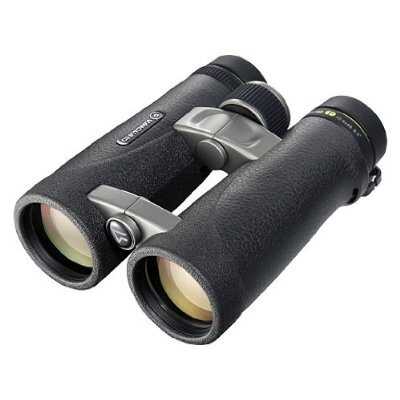
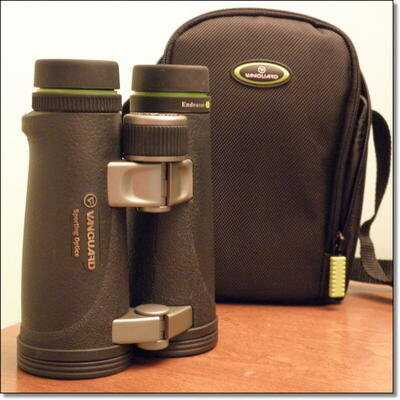
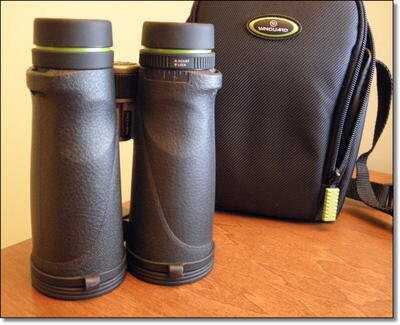
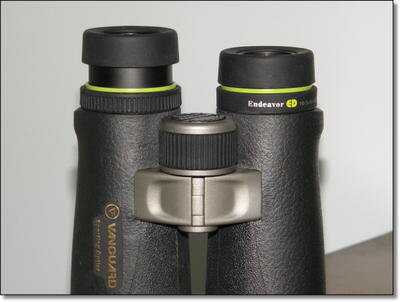
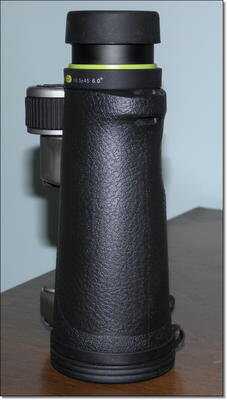
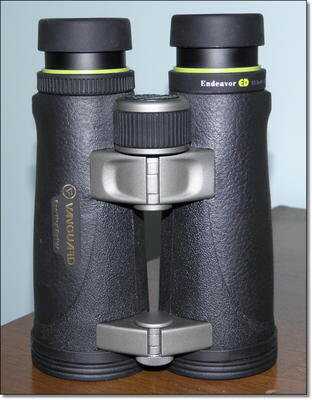
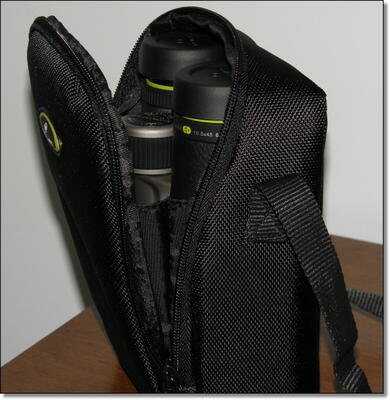
Wayne, care to direct to where Vanguard state they were using a field flatting system?
Hank,
You said it all. I could not agree more. It’s the Gold Rings that make me know what I have. They don’t make ’em any better.
These binocs. sound fantastic, but i’ve found out one imprtant thing in my short 58 years. If you don’t want to buy something over and over you buy it with a good warranty. These binocs have a life time limited warranty, which in my experince means just that, “limited”. For this reason I don’t buy any spotting scopes, rifle scopes, or binocs that don’t have a golden ring on it. I own a 3-9 golden ring that I have had since 1975 mounted on my deer rifle that has been droped on pavement and damaged. I sent it back to Leupold and they repaired it and upgraded it for no charge to me. I look for the best warranty I can get in anything I buy, and Leupold puts the best warranty on optics bar none. Granted a little more expensive initally but well worth it in long run.
Hank